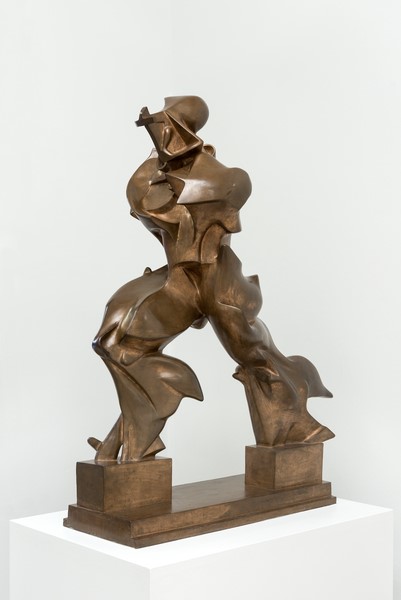Futurism & Europe. The Aesthetics of a New World reveals how the futurists made their entrance onto the European art scene over a hundred years ago and began interacting with other avant-garde artists and movements, such as De Stijl and Bauhaus. The futurist ideal involves the merging together of art and life. The exhibition features paintings and sculpture, furniture, carpets, ceramics, interior and stage designs, clothing, books and graphic work. A wide variety of functional objects are also on display, such as the famous Campari soda bottle.
The futurist ‘reconstruction of the universe’
1915, the futurist aesthetic ideals are laid out by Giacomo Balla and Fortunato Depero in the manifesto Ricostruzione Futurista dell’Universo. According to this manifesto, the innovations developed in the traditional arts – painting and sculpture – should be used to transform everyday life into a futurist universe: an ‘opera d'arte totale’, a total work of art, in which modern humans will live.
 A first introduction
A first introduction
Europe is introduced to the work of the futurists in 1912 through a touring exhibition of paintings by Umberto Boccioni, Carlo Carrà, Luigi Russolo and Gino Severini, which, after Galerie Bernheim-Jeune in Paris, travels to London, Brussels, Berlin, The Hague and Amsterdam, among other places. The exhibition, but above all the radicalism of futurism, evokes diverse reactions to say the least and sparks lively and sometimes downright heated debate between admirers and critics. What is certain, however, is that the futurist ideal of the merging of art and life opens up an entirely new path for the European avant-garde, perhaps the most productive of the twentieth century. For the futurists, entering the scene of the international avant-garde means broadening their horizons and honing their ideas.
International loans
For the exhibition Futurism & Europe, many loans from all over Europe and sometimes beyond travel to Otterlo. But many works from the Kröller-Müller collection are also on display. In addition to Italian futurists, such as Giacomo Balla, Umberto Boccioni, Fortunato Depero, Antonio Sant'Elia, Benedetta Cappa and Enrico Prampolini, many other avant-garde artists are represented in the exhibition, including Theo van Doesburg, Gerrit Rietveld, Georges Vantongerloo, Sonia Delaunay, Le Corbusier, Pablo Picasso, Olga Rozanova, Natalia Goncharova, El-Lissitzky, Vladimir Tatlin, Alexander Rodchenko, Walter Gropius, Oskar Schlemmer, and Alma Siedhoff-Busscher.
Publication
The exhibition is accompanied by a publication with the same title containing some 20 essays by international experts. Covering a period from 1912 to 1939, this ground-breaking book follows futurism and the European avant-gardes in their common quest for a new aesthetic, which involved a lively exchange of new ideas and mutual admiration but also friction and rivalries.
Guest curator
The composition of both the exhibition and publication is in the hands of Prof Dr Fabio Benzi, professor at the Università degli Studi 'G. d'Annunzio', Chieti-Pescara.
